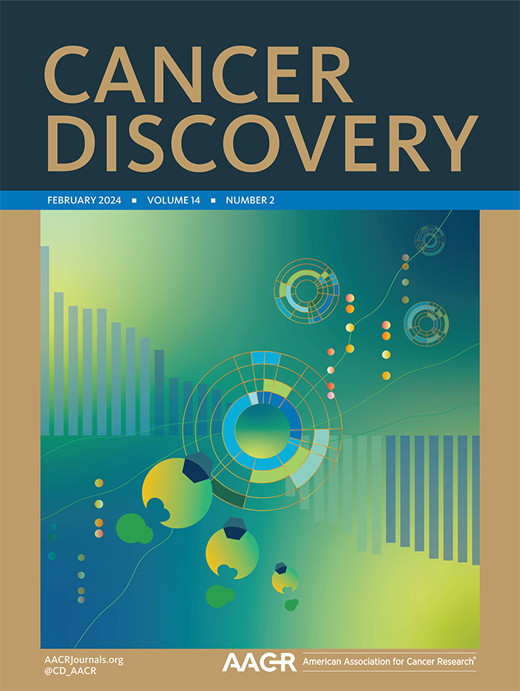Pan-cancer analysis of oncogenic MET fusions reveals distinct pathogenomic subsets with differential sensitivity to MET-targeted therapy
IF 33.3
1区 医学
Q1 ONCOLOGY
引用次数: 0
Abstract
MET fusions (MET-Fs) are oncogenic drivers that remain poorly characterized. Analysis of 56 MET-F-positive tumors from an institutional cohort of 91,119 patients (79,864 DNA-seq plus 11,255 RNA-seq) uncovered two forms of MET-F pathobiology. The first group featured 5’ partners with homodimerization domains fused in-frame with MET-tyrosine kinase domain (TKD), primarily originated from translocations, frequently excluded MET exon 14, mediated oncogenesis through cytoplasmic aggregation and constitutive activation, and were markedly sensitive to MET tyrosine kinase inhibitors (TKI) in pre-clinical models and patients with lung cancer. The second group lacked partner homodimerization motifs and retained MET transmembrane and extracellular domains. Their pathogenesis involved intrachromosomal rearrangements, resulting in partner selection for promoter hijacking and fusion allele amplification. Membrane-bound fusions were enriched in gliomas with RTK co-alterations. We provide a framework to comprehend the heterogeneous landscape of MET-Fs, supporting that fusion oncogenicity and MET-TKI sensitivity are determined by structural topology and pathogenomic context.癌性MET融合的泛癌分析揭示了不同的病理亚群对MET靶向治疗的不同敏感性
MET融合(MET- fs)是一种致癌驱动因素,目前尚未被充分描述。对来自91,119例患者(79,864 DNA-seq + 11,255 RNA-seq)的56例MET-F阳性肿瘤的分析揭示了两种形式的MET-F病理生物学。第一组的特征是具有同二聚化结构域与MET-酪氨酸激酶结构域(TKD)融合在框架内的5 '伴侣,主要源于易位,经常排除MET外显子14,通过细胞质聚集和组成激活介导肿瘤发生,并且在临床前模型和肺癌患者中对MET酪氨酸激酶抑制剂(TKI)显着敏感。第二组缺乏伴侣二聚基元,保留MET跨膜和细胞外结构域。其发病机制涉及染色体内重排,导致启动子劫持和融合等位基因扩增的伴侣选择。膜结合融合在RTK共改变的胶质瘤中富集。我们提供了一个框架来理解MET-Fs的异质性,支持融合致癌性和MET-TKI敏感性是由结构拓扑和病理背景决定的。
本文章由计算机程序翻译,如有差异,请以英文原文为准。
求助全文
约1分钟内获得全文
求助全文
来源期刊

Cancer discovery
ONCOLOGY-
CiteScore
22.90
自引率
1.40%
发文量
838
审稿时长
6-12 weeks
期刊介绍:
Cancer Discovery publishes high-impact, peer-reviewed articles detailing significant advances in both research and clinical trials. Serving as a premier cancer information resource, the journal also features Review Articles, Perspectives, Commentaries, News stories, and Research Watch summaries to keep readers abreast of the latest findings in the field. Covering a wide range of topics, from laboratory research to clinical trials and epidemiologic studies, Cancer Discovery spans the entire spectrum of cancer research and medicine.
 求助内容:
求助内容: 应助结果提醒方式:
应助结果提醒方式:


